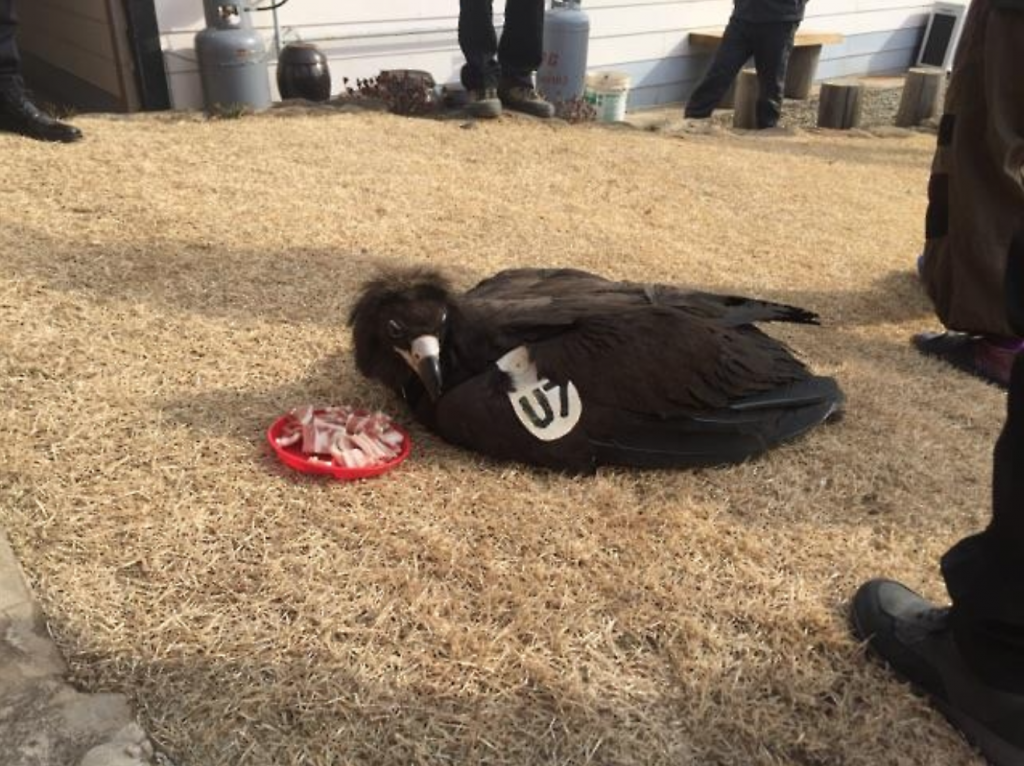
On the ankle of the bird was an identification tag with writings including Mongolia, Denver Zoo, 2016, and the number 516. On its right wing was another tag that read U7. (image: Geoje)
GEOJE, South Korea, Jan. 13 (Korea Bizwire) – A 60-centimeter-tall eagle was found trapped in a net surrounding a farm in a village near Geoje Wednesday morning. The bird was quickly rescued by local 911 emergency responders, who temporarily moved it to a nearby barn.
According to city officials, the eagle was dehydrated and seemingly in a weak physical condition, barely eating food, including raw chicken, that was offered by officials on both Wednesday and Thursday.
Officials plan to transport the eagle to the Gyeongsang National University Animal Medical Center in Jinju, a city some 50 kilometers away, if it continues its struggle to recover.
On the ankle of the bird was an identification tag with writings including Mongolia, Denver Zoo, 2016, and the number 516. On its right wing was another tag that read U7.
Experts speculate that Denver Zoo officials took the bird to Mongolia for research, and released it after placing the tags on it, suggesting that it became weak during its migratory flight and touched down on the Korean Peninsula to rest.
In fact, South Gyeongsang Province has become a popular winter habitat for eagles in recent years. Officials estimate that there are roughly 400 eagles making temporary stays in Goseong County, just north of Geoje. These birds spend roughly three to four months here and start heading back north towards the end of March.
“Some 2,000 eagles visit South Korea during the wintertime, many of them from Mongolia, flying through Chifeng and Liaoyang in China, then Sinuiju and Pyongsong in North Korea,” said Paek Woon-kee, an eagle researcher from the National Science Museum. “They travel a total distance of 1,740 kilometers in 22 days.”
By Joseph Shin (jss539@koreabizwire.com)






